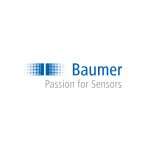How to specify a temperature sensor
Temperature sensors measure the temperature of media through an electrical signal. There are four main types: Thermocouples, Resistance Temperature Detectors (RTDs), Thermistors and Semiconductor based integrated circuits – each with their own pros and cons. PIF spoke to sensor experts Baumer to find out more about the different temperature sensor types and how to specify the right one for your application.
Temperature sensor types
Let’s take a closer look at some of the features and benefits of the main temperature sensor types:
Thermocouples
Thermocouples consist of two dissimilar metal wires joined together. The temperature difference between these different conductors in turn produces a voltage difference that can be measured to calculate temperature. Thermocouples are cost-effective, durable, and can measure a wide range of temperatures up to more than 1,800 °C (3,300 °F).
Resistance Temperature Detectors (RTDs)
The resistance of any metal changes as its temperature changes, which is the basic premise of Resistance Temperature Detectors (RTDs). Platinum is the most accurate and common material used to make PT100 or PT1000 type platinum RTD sensors. These temperature sensor types deliver accurate and repeatable measurements but are slower than thermocouples.
Thermistors
Thermistors also measure resistance changes but are made from polymers or ceramics, with the Negative Temperature Coefficient (NTC) thermistor the most widely used for temperature measurement applications. These small and durable devices don’t offer the same accuracy as RTDs and need more data manipulation to measure temperatures.
Semiconductor based integrated circuits
Semiconductor based integrated circuits come as a local temperature sensor or remote digital temperature sensor. Local sensors measure their own die temperature using a transistor, while remote sensors measure the temperature of an external transistor. These small and flexible sensors offer a limited temperature range.
Where are temperature sensors used?
You might not consciously realise it but we regularly use temperature sensors as part of our everyday routines, from thermostats to controlling our refrigerators. In an industrial sense, typical temperature sensor applications include in the automotive industry for measuring the temperature of oils or coolants and in gas-powered boilers.
If an application requires some degree of temperature measurement, it’s a safe bet that a temperature sensor will be involved. The type of sensor will largely depend on what’s being measured (liquid, air, mass), whether it’s being measured inside or outside, and the temperature range being measured.
Specifying a temperature sensor
Baumer temperature sensors meet all industry requirements and internationally recognised process connections. Thanks to their “building block architecture” you’ll always find the right sensor for your application easily and with the highest level of flexibility.
When specifying a temperature sensor, it’s a useful exercise to consider your application requirements, the installation conditions, and the media properties at work. Here are just some of the most important parameters to bear in mind when specifying a temperature sensor:
Sensor element type (single, duplex)
Sensor insert (2-wire, 4-wire)
Transmitter requirements
Required output signal
Accuracy
Galvanic insulation requirements
Ambient temperature
Process temperature
Temperature range
Process connection (industrial / hygienic environment)
Sensor immersion depth
Sensor sleeve diameter
Response time
Case type (IP-class, integrated display)
Built-in display requirements
Electrical connection
Approvals and certifications (e.g. 3-A, EHEDG, FDA, EN 50155, ...)
Hazardous area classification
Thermowell
For more information, visit Baumer.
Get the latest process industry news
Interested in receiving even more industry-leading news from Process Industry Forum delivered directly to your inbox? Then sign up to our free newsletter. Bringing you the latest news, trends, innovations and opinion from across the process industry, our exclusive newsletter gives you all the industry insights of the moment in one, easy-to-digest bulletin. Stay ahead of the competition with regular process industry news instalments from PIF.

